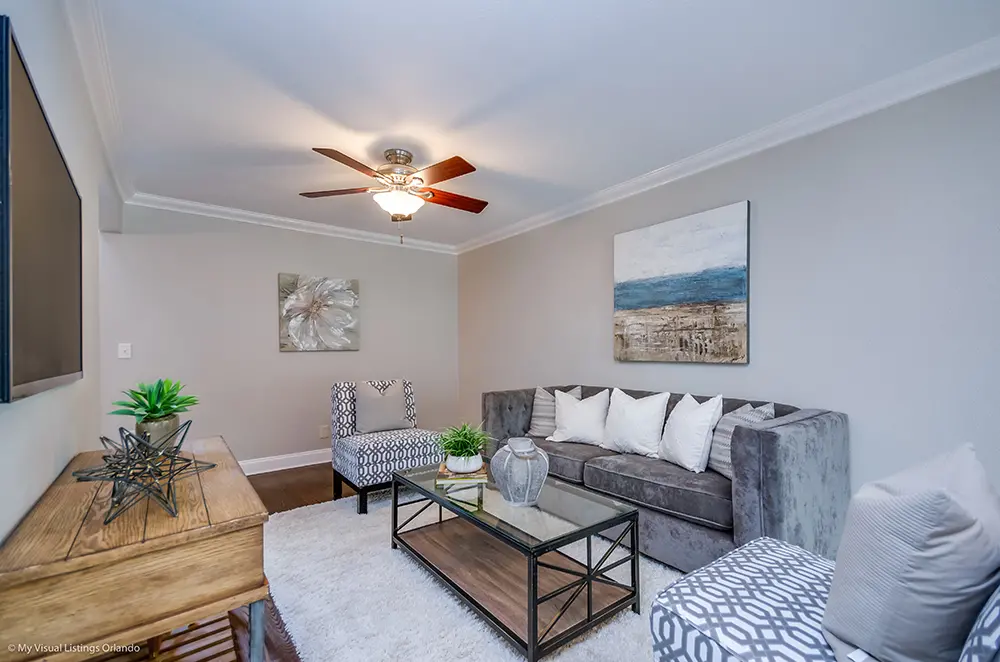Presented by BetterHelp.
It’s always fun to read magazines and websites dedicated to interior design and home improvement ideas. You may be looking for a way to rehab your closet or a new paint color for your kitchen. But you may be less aware of the psychological impact your home and surroundings are having on you.
In this article, we’ll take a look at some of the science-backed ways you can redesign your home to help you feel more focused, relaxed and less stressed.
First, it’s important to remember that we all want to feel more relaxed and productive in our lives. These tips are meant to give you some positive ways to feel better in your surroundings. But sometimes, we face challenging circumstances that become difficult to move through on our own.
Online therapy can be an easier way to find and meet with a licensed therapist on a regular basis. It’s possible to be matched within 24-48 hours of getting started, then meet with your therapist conveniently from your own home. Just know that you’re not alone, and that it’s healthy to seek help.
Embrace Your Curves
One of the most interesting results to come out of studying the effects of design elements upon human wellbeing has to do with curved shapes. According to research, people like curvy shapes over square shapes in interiors. Not only did people view curvilinear shapes to be more attractive in their environment, the curved shapes were more likely to induce positive emotions in test subjects.
Even if you can’t swap out your rectangular dining table, try adding rounded decorative objects or art prints with curvilinear forms.
Use Your Color Scheme To Positively Affect Your Mood
According to research, there is a correlation between colors and feelings. When people are exposed to warmer colors they tend to feel more excited. People working in red environments have even been shown to be angrier, while people in blue environments felt more favorably.
Consider how the colors in your environment are affecting you. You can paint a room or add decorative touches like throw pillows to switch up color palettes. If you live in an apartment or you want to get the effects of different colors throughout the day, consider using a smart light bulb that allows you to change colors.
Upgrade Your Home Lighting To Improve Your Mood
Humans need to be in sunlight to be able to create vitamin D in our bodies, which is connected to the production of serotonin and melatonin. While it’s important to get yourself into sunlight, sitting by a window during the workday may not be your best option. The glare may be irritating, in particular for people with chronic migraines and anxiety.
If you’re sensitive, consider changing the orientation of chair to windows during the day, or even installing blinds that gently filter the light. To keep your lighting design healthy at night, be sure to look at the kinds of lightbulbs you use in your home. LED bulbs tend to have more of a blue cast, which can sometimes trick your body into thinking it’s daytime. Choose warm white bulbs to soften the blue light you’re getting in the evening.
Clean Up Your Clutter For More Focus
Have you ever looked around your workspace, and gotten distracted by all of the stuff? You’re not alone. According to one psychological study, school kids were more likely to be distracted and were more likely to be able to focus and sit quietly in a room with a lot of furniture and decoration.
If you have a knick-knack shelf with many items, your home office may not be the best place for it. Consider editing down your items or moving items to another room. For example, having a lot of objects around in a dining room may not be distracting to your meal time.
Uplift Your Mood With Flowers
Here’s one last science-backed tip for transforming your home that doesn’t involve painting or cleaning. Pick up a bouquet of flowers the next time you’re at a farmer’s market or grocery store. A Harvard study showed that people feel less stressed surrounded by flowers, and even more compassionate toward others.
Takeaway
We hope learning more about the science behind some of these design options empowers you to take steps toward making your space relaxing. Don’t feel limited to these suggestions, some people get a boost from adding fragrance, sound, and plants into their home. Take time to learn more about the psychology of interior design, and don’t hesitate to seek additional support and ways to improve your overall mental wellbeing.








